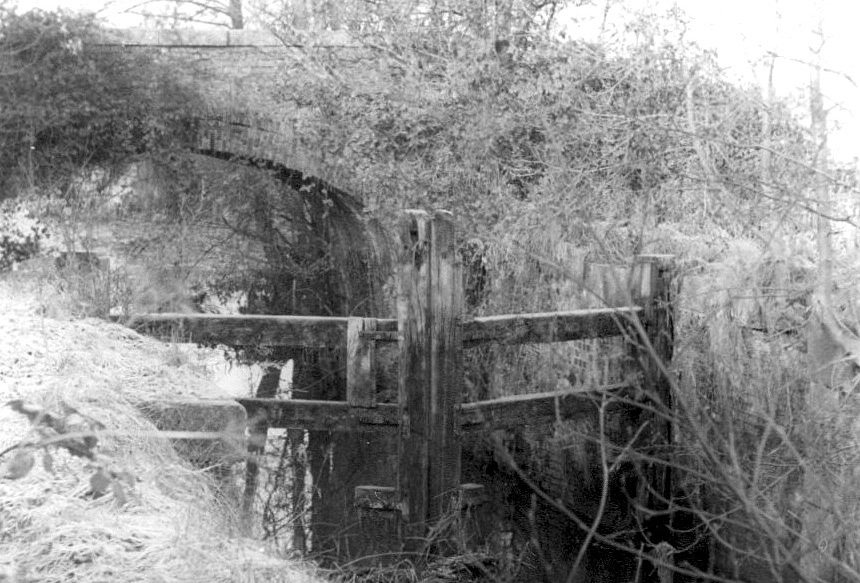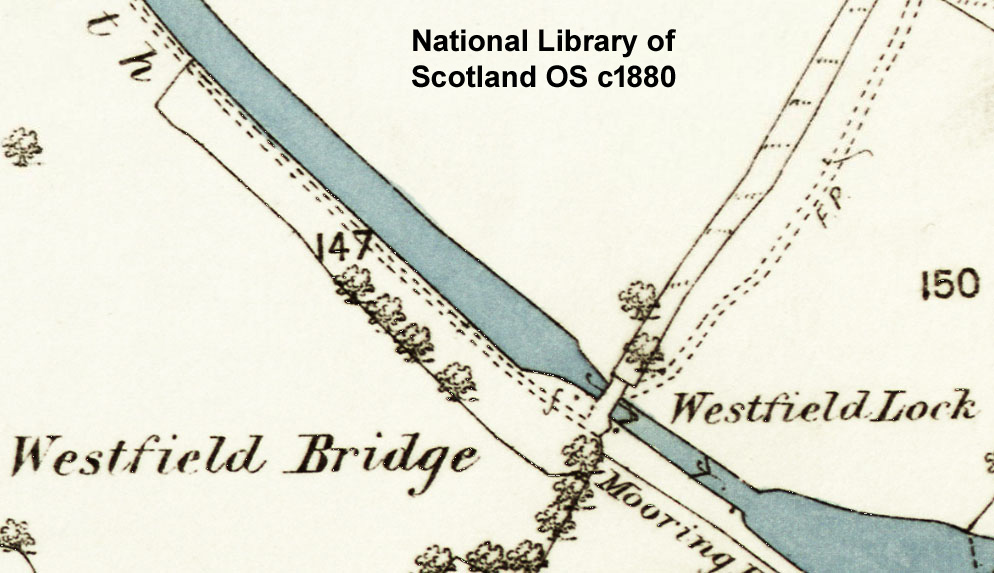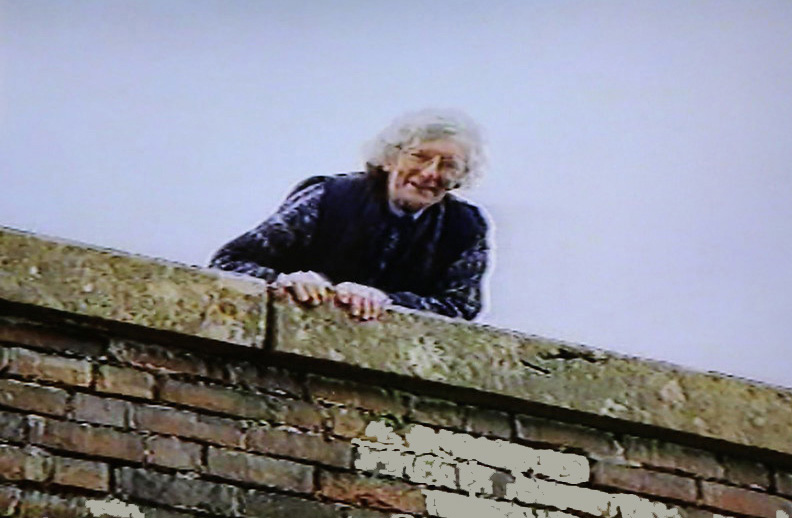

This lock took its name from its location in one of the former open fields of the village of Eastington, and faint traces of the old ridge-and-furrow style of farming can still be seen in the nearby fields. It is the first in a flight of five locks that carries the Stroudwater Canal up the hill past the village of Eastington. (For more about building the five locks, visit Building the Eastington Flight.)
As the canal intersected an old path between the hamlet of Westend and the parish church, the Stroudwater Company was originall obliged to provide a railed walkway across the lower gates.
Westfield Bridge originally just carried a private track giving the local farmer access to his fields near to the River Frome. Later it was also used by the public as it provided an easier route than the official footpath over the walkway across the lock gates. The bridge was taken down and rebuilt with blue bricks in 1841, when the new keystone was inscribed with this date and the Company paid for beer for the workers.


Adjoining Westfield Bridge, there was a narrow strip of land beside the canal that was owned by the Stroudwater Company. Named Lime Kiln Piece in 1781, it was evidently the site of the Company's kiln that helped to produce the lime mortar used in building and maintaining the locks and bridges. In 1841, the Committee ordered the kiln to be moved to the nearby maintenance yard.
Later the paddock became a centre for bathing. In 1897, a dressing shelter was set up for the Eastington Bathing Club, and boys were still learning to swim in and around the lock in the 1930s.
At the start of the Second World War, a pillbox was built in the paddock as part of a line of structures along the canal intended to defend Bristol. One day a cow got inside, and the farmer had great difficulty getting it out. The pillbox was cleared away after the war, but some remains of the base can still be seen by the east corner of the bridge.


In preparation for the construction of the M5 motorway c1970, when the canal was no longer in use, the Stroudwater Company agreed that the canal channel could be filled in, the canal structures cleared away and any spare land returned to agriculture. But local farmer Mrs Christine Martin (later Mrs Hearsey) did not want to loose 'her' bridge as it had always been part of her farm and the enclosed gradient was a convenient space to load animals into a lorry. So she arranged with the Company that the bridge would be spared.
One day, however, Mrs Martin heard a huge explosion and saw smoke rising - so she ran to the site fearing the worst. On arrival, she was relieved to find that 'her' bridge was still intact, but a demolition man was making a hole in it in preparation for blowing that too. As he would not listen to her pleas, saying 'he had his orders', she stood on top of the bridge and stayed there all afternoon until the man said it was time for him to go home. The matter was resolved by a phone call the following day, and the bridge was saved.
The lock was covered over with earth for many years, and it is now being restored as the John Robinson Lock.
In 1875, children from the local Wesleyan Sunday School marched to Westfield Bridge behind a pipe and drum band to board a barge for a trip to Sharpness. The New Dock there had only recently been opened, and the party were amazed to see a huge sailing ship that had brought 1100 tons of wheat direct from San Francisco.
Date of completion of lock from D1180/1/1 p161.
Walkway across lower gates from memories of Geoffrey Martin.
Bridge reconstruction from D1180/9/1 p69, D1180/2/29 May 1841.
Lime Kiln Piece name from D1180/10/2.
Moving the lime kiln from D1180/1/4 p208.
Dressing shelter from D1180/1/7 p211, 233.
For Westfield Bridge pillbox/block house, see D1180/9/19 p295 and remembered by Geoffrey Martin.
For construction of M5, see file D1180/9/54
For Saving Westfield Bridge, see HTV documentary 'Between Two Rivers', 1993.
Sunday School trip from Stroud Journal 8 & 22 May 1875.